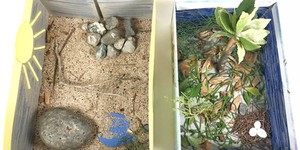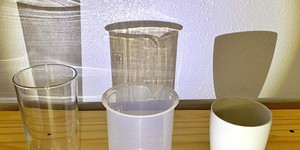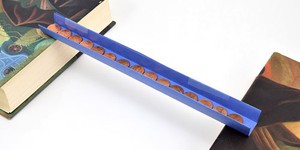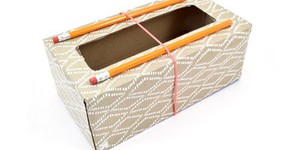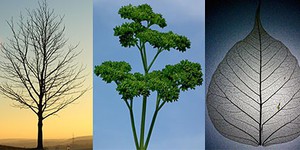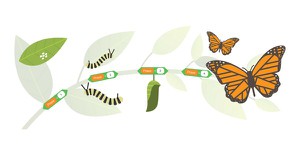First Grade Lesson Plans (16 results)
Science Buddies' first grade science projects are the perfect way for first grade students to have fun exploring science, technology, engineering, and math (STEM). Our first grade projects are written and tested by scientists and are specifically created for use by students in the first grade. Students can choose to follow the science experiment as written or put their own spin on the project.
For a personalized list of science projects, first graders can use the Science Buddies Topic Selection Wizard. The wizard asks students to respond to a series of simple statements and then uses their answers to recommend age-appropriate projects that fit their interests.
Let us help you find a science project that fits your interests, with our Topic Selection Wizard.|
Select a resource
Sort by
|
Lesson Plan
Grade: Kindergarten-2nd
9 reviews
Get creative with your students in this hands-on lesson plan! Students will use mostly natural materials to build a shoebox habitat that mimics a real-life habitat for an animal of their choice. As they present their miniature habitats to each other, students realize that not all habitats are suitable for all animals. Each animal species needs the resources of a specific habitat to survive.
Read more
NGSS Performance Expectations:
Lesson Plan
Grade: 1st
18 reviews
In this lesson, students explore firsthand what transparent, translucent, and opaque mean, and how they are related to light. They will place a variety of materials in front of an illuminated object and predict if and how well they will be able to see the object through the material sheet. In doing that, students will realize that different materials allow different amounts of light to pass through.
Remote learning:
This lesson plan can be conducted remotely. The Engage section of the…
Read more
NGSS Performance Expectations:
New
Lesson Plan
Grade: 6th-9th
In this lesson plan, students will model the complex biologic manufacturing process. First, they will model the cellular expansion process that occurs in a bioreactor. Then, students will lyse the cells to isolate the proteins from the dyed cell debris. Lastly, they will model the advanced filtration process to purify proteins so they can be used as medicines.
Read more
NGSS Performance Expectations:
Lesson Plan
Grade: Kindergarten-2nd
19 reviews
Your students have probably walked or ridden over a bridge at some point in their lives. In this engineering activity they will design and make bridges out of folded pieces of paper, and test how much weight they can hold with pennies. How does the shape of a bridge affect its strength? Let your students explore and find out with this lesson!
This lesson can be expanded to a second lesson looking at how the material a bridge is made out of can change its strength; see second lesson for details.
Read more
NGSS Performance Expectations:
Lesson Plan
Grade: Kindergarten-5th
3 reviews
In this fun engineering lesson plan, your students will build a rocket-catching device to help a falling rocket land vertically without crashing, using simple and readily-available materials.
Middle school
and
high school
versions of this lesson plan are also available. This lesson was part of the 2025 Science Buddies Engineering Challenge.
Read more
NGSS Performance Expectations:
Lesson Plan
Grade: 1st
16 reviews
We see ourselves in a mirror because mirrors reflect light. Light interacts with materials in different ways; for instance, shiny surfaces like mirrors are able to change the direction of light. In this lesson plan, students will demonstrate how light bounces off a reflective surface by redirecting a light beam from a flashlight to different locations within the classroom. Students will then be challenged to use their knowledge about mirrors to find a way to guide a light beam to a specific…
Read more
NGSS Performance Expectations:
Lesson Plan
Grade: 1st
19 reviews
Young students know that they can hear sounds, but do they know what causes sounds? In this lesson they will learn that sounds are caused by vibrations, and they will build a fun musical instrument of their own.
In the Sound and Vibrations 2: Make Sprinkles Dance, students will learn that sounds can also cause vibrations.
Read more
NGSS Performance Expectations:
Lesson Plan
Grade: Kindergarten-2nd
Nature is full of objects with many different shapes. Some of these shapes display obvious regularities or distinct patterns, such as stripes, waves, symmetry, or spirals. Each of these natural patterns has evolved over a very long time and serves a specific function that usually helps a plant, animal, or other organism to survive. In this lesson plan, students explore the branching pattern of trees, plants, and leaves. They will make drawings and a leaf rubbing to compare different branching…
Read more
NGSS Performance Expectations:
Lesson Plan
Grade: 1st
6 reviews
Can you make something move by using only sound? Your students will find out in this lesson plan as they explore the connection between sound and vibrations.
This is the second in a pair of lessons about sound. See Sound and Vibrations 1: Rubber Band Guitar for the first lesson.
Read more
NGSS Performance Expectations:
Video Lesson
Grade: 1st
4 reviews
Students know that sounds can be heard, but do they know that some sounds can also be felt and seen? In this lesson, students will learn that vibration causes sound and build a fun musical instrument of their own.
Read more
NGSS Performance Expectations:
Lesson Plan
Grade: Kindergarten-3rd
2 reviews
Computational thinking is a problem-solving process that is used in everyday life as well as computer programs. In this lesson, students apply their computational thinking skills to explore the life cycle of a butterfly. They'll create an algorithm, or set of instructions, to model the life cycle of a butterfly. They will write this algorithm using conditionals and then program it on a computer.
Learning Objectives
Students will:
Analyze the life cycle of a butterfly.
Develop an algorithm…
Read more
|

